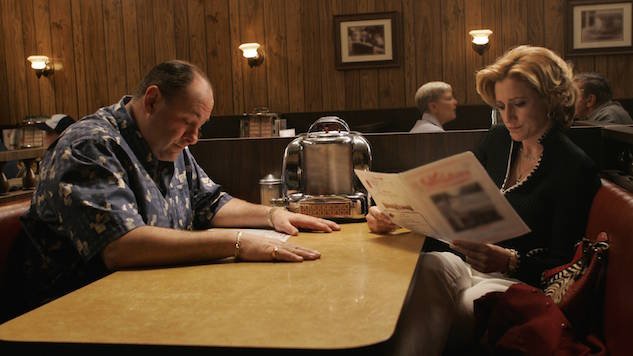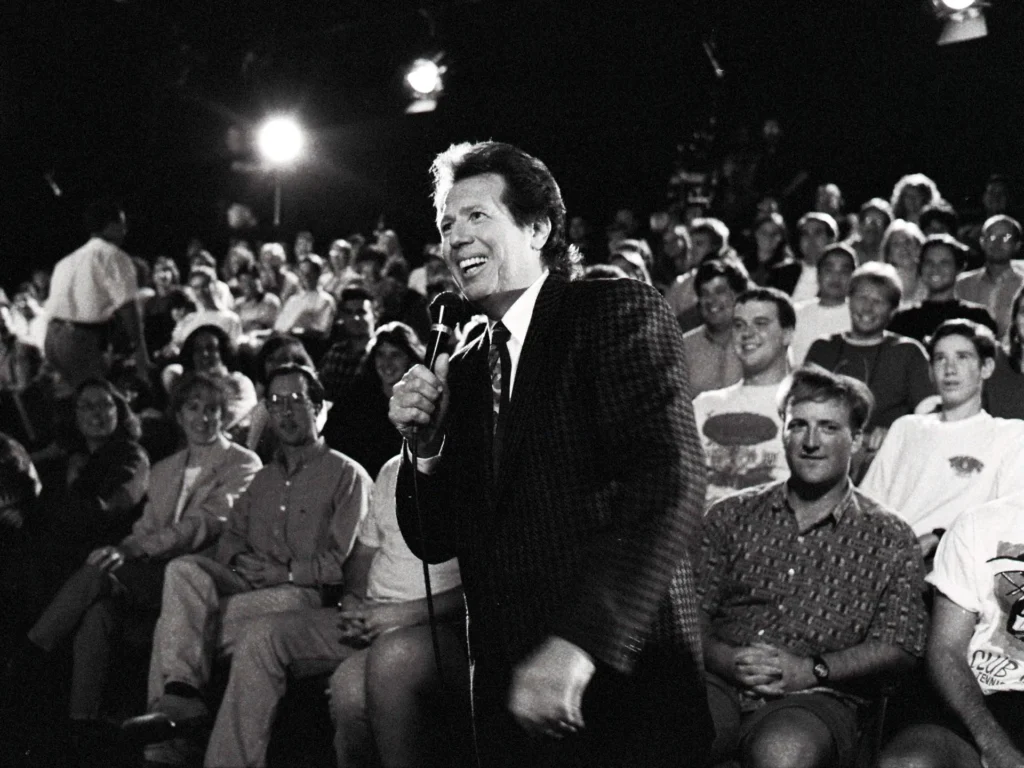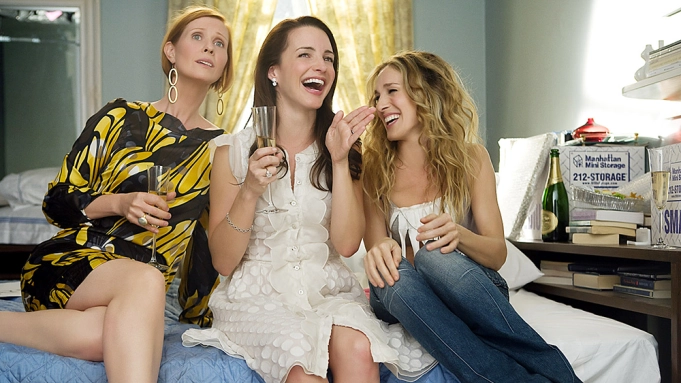I started working at Home Box Office in the summer of 1982. If you could walk through a time portal that took you back to that time, in its structure, as a delivery system, in its program content, you wouldn’t recognize the company. Hell, if even then you could walk through another time portal to the first days HBO was on the air, again, you would’ve found the service just as unrecognizable from its 1982 incarnation, particularly in regard to the kind of original programming that has become – as it has with all the streaming services – its signature.
From The Sopranos and Sex and the City to Game of Thrones and Girls and Succession and a host of others, HBO – now re-branded HBO Max – has been defined by and acclaimed for its originals. But back when Chuck Dolan first started noodling the idea of the subscription service that would become HBO, original scripted content wasn’t a far-off ambition, or a desired dream, or even a whimsical fantasy. It wasn’t even part of those first conversations, although, to be fair, nobody knew exactly what HBO was supposed to be since there’d never been anything like it before.
#####
I won’t say the content was a secondary consideration since content has always driven the pay-TV business, but Dolan wasn’t looking to explore new realms of alternative TV programming. His priority was to save his floundering cable business.
If the early days of HBO would be unrecognizable to a present-day TV watcher, then the post-WW II media environment would seem positively alien! There were just three major broadcast networks – ABC, CBS, NBC – and, in major markets, some stand-alone independent TV stations, all broadcasting over the air. Cable TV existed as early as the late 1940s, not as a content platform but simply as a way of getting broadcast channels to communities either too distant or obstructed (say, by mountains) for clear reception.

Charles “Chuck” Dolan, a onetime syndicator of home-edited sports and industrial films, got the bright idea of using cable delivery, which was primarily a rural and suburban phenomenon in a city environment. In Manhattan – where Dolan already had a closed-circuit system set up to deliver tourist information to hotel rooms – residents living only a few blocks from the broadcast antennas atop the Empire State Building had lousier reception than people living miles away in New Jersey because of interference from all the tall buildings. Dolan’s idea was to extend his system throughout the borough to provide clear delivery of broadcast TV.
And so he did…and started going broke in the process. The idea was fine, but the practicalities were killing him, the Number One practicality being that it cost thirty times more to run a mile of cable in Manhattan than it did out in the ’burbs. There was only so much Dolan could charge subscribers to get a clear reception of F Troop and The Hollywood Squares and keep the service attractive, and it wasn’t enough to keep the service afloat.
Luckily, Dolan acquired a partner – Time Inc. – which had the deep pockets to keep Dolan’s service afloat (eventually, Time would buy out Dolan and become the sole owner of his company, but don’t feel bad for Dolan; he would go on to found Cablevision and become part-owner of a number of programming services, Madison Square Garden, and several sports teams, becoming a billionaire in the process). Dolan’s solution to the problem was to offer TV viewers something extra, an incenting reason to subscribe to his service that went beyond getting what everybody else in the country was already getting; something special. That special thing was a separate channel that he originally envisioned as offering a mix of uncut theatrical movies and sports.
Dolan dubbed the something extra “The Green Channel.” Later, in putting together promotional materials for its first rollout in Allentown, Pennsylvania (complicated licensing restrictions ironically kept Dolan from offering the service in Manhattan initially), other names were tossed around before execs settled on “Home Box Office”…although no one was happy with it and it was expected it would be changed later.
#####



Debuting in just a handful of homes in November of 1972, HBO’s first night of programming consisted of a two-year-old movie – Sometimes a Great Notion (ironic, eh?) – and a hockey game. The service was not an overnight success and, over the next years, made a slow crawl to moderate profitability in a small area of the northeast. It wasn’t until HBO moved to satellite transmission in 1975, becoming a national service literally overnight, that the service took off, growing exponentially in those early years.
What was the programming driving that success? Well, again, time travelers, you’d probably be surprised…and maybe even disappointed.
The major driver was theatrical movies. Remember: there’s no home video. Once a movie was done with its theatrical run, you hoped it would show up on network TV (a hope because all of them didn’t), where it would air with the good parts edited or bleeped and interrupted every thirteen-and-a-half minutes by commercials. Getting movies just a year after they’d been in theaters with all the juicy, dirty, violent parts intact was enough of a novelty that common were stories of people chasing cable trucks down their streets to get hooked up.
Oh, there was a smattering of original programming, but it was considered by HBO’s programmers as more or less a supplement to movies. HBO continued with sports, but between the broadcast networks having glommed up all the good stuff and HBO’s small programming budgets in those days, the sports offerings were pretty motley. Yeah, there was still hockey and NBA basketball…but also rodeos, demolition derbies, horse racing, swim meets, and even bowling. The days of headline-grabbing heavyweight boxing bouts were years away.
And there was music. One of HBO’s first musical offerings was – get ready for it – the Pennsylvania Polka Festival, featuring (not kidding) Wally and the Polka Chips! (Get it? “Polka Chips” – like poker –? Forget it). That, too, would evolve into major world-class music events from around the world.
There were stand-up comedy specials and magic shows; the company found that documentaries worked well, the occasional kiddy special (Emmett Otter’s Jug-Band Christmas was a fave and would lead to its creator, Jim Henson, later producing HBO’s first regular children’s series, Fraggle Rock).
Thing is, it was trial and error. Nobody knew what would work because nobody’d been down the road of programming an alternative to broadcast network stuff before. Conceptually, though, it was still, well, “filler” is kind of dismissive, but suffice to say, the company knew nobody was forking out their monthly subscription fee for any of it. Movies still drove the service. By the mid-1980s, that was a problem.
#####
A couple of things piled on HBO as well as on the entire pay-TV industry (which, at the time, consisted of HBO and its second channel, Cinemax; Showtime, The Movie Channel [which would eventually merge with Showtime], and regional pay-TV services like Wometco in New York City, and the Z Channel in Los Angeles.
Exclusivity:
Until the 1980s, all pay-TV services showed the same movies, more or less. If HBO had Star Wars (1977), Showtime and The Movie Channel had it, too, and so on for every major (and most minor) release. Subscribers often couldn’t tell the services apart. It wasn’t even uncommon for competing services to schedule the same movie head-to-head with each other!
Showtime got the idea of cutting exclusive deals with some studios; paying a studio extra so they would only release their titles to Showtime and no other service. The strategic thinking was not only would this differentiate SHO from HBO but make SHO indispensable to HBO subscribers; if you wanted all the big movies, you’d have to subscribe to both services.
HBO fired back with exclusive deals of its own. The problem for both services was that extra dough they had to kick to movie studios for exclusive rights. Both companies were paying more to get less, and a new technology was making the less they had worth even less (lesser? Well, you get the picture).
VHS:
The success of home video, particularly the VHS format, seriously undercut the value of movies to pay-TV channels. Since movies were released to home video six months before they aired on the pay services, anybody eager to see a new movie at home had probably seen it long before it got to HBO or SHO. While none of the pay services was about to back off of exclusivity, spending all this money for movies much of the public had already seen didn’t exactly seem like much of a consumer lure, or the best use of programming budgets, particularly when those budgets were about to take a hit.
The Wall:
In the late 1980s, subscriber growth across the industry suddenly stalled. After years of measuring growth in the millions, services were scrambling to even add a few tens of thousands. It happened so suddenly across the entire industry that in the business, it was referred to as “hitting the wall.”
There was no one reason. Home video had certainly undercut the value of a movie-driven services, but just as (if not more) impactful was the finite limit of the cable universe. Much of the growth of the industry had been powered by the expanding reach of cable, but by the mid-1980s, pretty much every part of the country where cabling was economically viable had been cabled, and most of the people who wanted a pay-TV service had it. The Gold Rush days were over.



#####
The transformative figure for HBO, the man who turned HBO into a serious commitment to original scripted programming, was Michael Fuchs (although, in a bit of bittersweet irony, Fuchs would leave the company in 1995 when it began experiencing its greatest originals successes). Abrasive, arrogant, and confrontational, Fuchs was also a brilliant programmer and a visionary. A former William Morris Agency lawyer, he’d been with HBO since 1977 and became CEO in 1984. Fuchs saw that original programming would be both a tool to differentiate the service from other channels but also compensate for the dwindling appeal of theatrical movies.
Knowing what he wanted HBO to become was one thing; getting it there, for Fuchs, was something else. His handicaps were several.
Although HBO was the most popular of the pay-TV services, it was still in a minority of American homes, somewhere between 45% and 50%. That held little appeal for heavy caliber producers of TV content when the major networks offered a pipeline into almost every home in the country. And, with the majority of its programming budget going to movies (at its peak, about a half-billion bucks per year), the company was limited in what it could spend on originals, particularly as it moved into big-ticket sports events like heavyweight boxing championships which ate up a good share of what was left.
HBO’s first notable accomplishments were in the area of made-for-HBO movies. At first, they ranged from the blah (The Terry Fox Story [1983]) to the awful (The Cold Room [1984]). I once asked one of our PR people why we made such forgettable stuff. “Because we can” meaning this was all that was coming to the company.
The Hollywood production hierarchy was a producer first pitched a project to the major studios. If he/she couldn’t land it in that circle, then he/she made the rounds of the smaller indies, then the major broadcast networks (they were making made-fors regularly in those days) and then – and only then – to cable. We were like an expansion team getting the players nobody else wanted.
But then HBO hit with the 1987 biopic Mandela, and they founda groove doing classy, history-based, Emmy-winning biopics. The broadcast networks were making less made-fors and HBO filled the vacuum, showing itself to be a home not for cast-off junk, but as a place producers could bring their passion projects the nets wouldn’t – and, depending on the content couldn’t — do.
But movies were one-shots; they didn’t bring people back month after month (or, for that matter, week after week). They couldn’t build brand loyalty. A success one month didn’t bring viewers or new subscribers in the next.
But, again, trying to get producers interested in creating content for HBO was a tough sell: short money, a limited audience, no foreseeable afterlife in syndication (most network TV shows are deficit-financed; producers get their big payday when a series goes into syndication; in the 1980s, a drama usually needed three years, a sitcom five to be considered viable for syndication).
Early series were, well, there’s a reason nobody talks about them much. Actually, by the time I left the company in 2009, nobody even remembered them (thankfully)! There was the bland Not Necessarily the News which was like the newscast part of SNL expanded to a rarely funny half-hour; 1st & 10 featuring Delta Burke as the owner of an NFL team about which most critics considered the most creative element to be how the writers got the team’s cheerleaders out of their outfits every episode; The Hitchhiker which was a poor man’s The Twilight Zone juiced by gratuitous gore and even more gratuitous nudity.
There was some impressive stuff sprinkled here and there in those days: Vietnam War Story, The Ray Bradbury Theatre, but the breakthrough came in 1988 with Tanner ’88 – a faux documentary series about a former Congressman (Michael Murphy) trying to nail down the Democratic presidential nomination. The series had a hell of a pedigree: Garry Trudeau, the man behind the Doonesbury comic strip, was the writer/creator, and in the director’s chair, Robert Altman.
Tanner didn’t light up the ratings scoreboard, but it sent a message to the Hollywood creative community. Bridget Potter, HBO’s then programming chief, said the show “attracted a new kind of critical attention to HBO.” Hollywood creatives took this to mean that the material the networks won’t do/can’t do/are afraid to do can be done here; at HBO.
You could see the wave building. There was the Monty Pythonesque sketch comedy show The Kids in the Hall; then the campy grotesque of Tales from the Crypt produced by the powerhouse trio Joel Silver, Richard Donner, and David Giler; John Landis brought the company the fanciful Dream On, which was developed by future Friends sitcom royalty Marta Kauffman and David Crane; and then the wave seemed to crest with The Larry Sanders Show, Garry Shandling’s brilliant, brutal, buzzy skewering of the TV industry.
Behind these flagship shows were more niche-y shows – again, the kind of stuff “regular” TV wouldn’t do (the HBO marketing campaign by then capitalized on this, built around the phrase, “It’s not TV; it’s HBO”): disturbing prison drama Oz, edgy talk shows Dennis Miller Live and The Chris Rock Show, Spinal Tap-esque Tenacious D, and others.
HBO wasn’t quite “there” yet, but these successes positioned the service to take itself to a content level that you viewers today would recognize.
#####



In what one could consider HBO’s first Golden Age of programming, the service produced in short order it’s three biggest hits to that point: Sex and the City (debuting in 1998), The Sopranos (rolling out the following year), and the very next year Six Feet Under. They were, in the limited pay-TV universe, monster hits. Coupled with some second-tier acclaimed successes – The Wire, Curb Your Enthusiasm, Real Sports, Real Sex, Real Time with Bill Maher among them – more and more the appeal of the service was in its originals. As other services followed suit – think of AMC with Mad Men and Breaking Bad, FX with The Shield et al – the era of cable as a powerhouse provider of daring, acclaimed content had arrived, spearheaded – as most major changes in the industry always had been – by HBO.
#####
And now here we are, all these years later. The library of HBO titles reads like a canon of American TV classics. From a single channel that was on the air only a few hours a day, it is now two multiple-channel services as well as a streaming service, all still offering some of the most respected programming on the tube.
The environment HBO Max operates in is infinitely more competitive than it was at the company’s birth. In 1972, HBO had no competitors, and when it went on the satellite in 1975, it was a year before any other pay-TV channel made the same jump. But today, the cable spectrum numbers in the hundreds. And HBO Max was late getting into the streaming arena when it was already dominated by the likes of Netflix, Hulu, and Amazon.
What hasn’t changed is the company’s eye for the kind of shows that have, for the last three decades, given HBO – even amidst the clutter – a distinctive voice, a distinctive vision, and a brand whose name still means something in a busy, bustling TV universe.




















![[Book Review] The Blade Itself (The First Law Trilogy) by Joe Abercrombie](https://bendthekneegot.com/wp-content/uploads/2018/01/1516047103_maxresdefault-218x150.jpg)

















